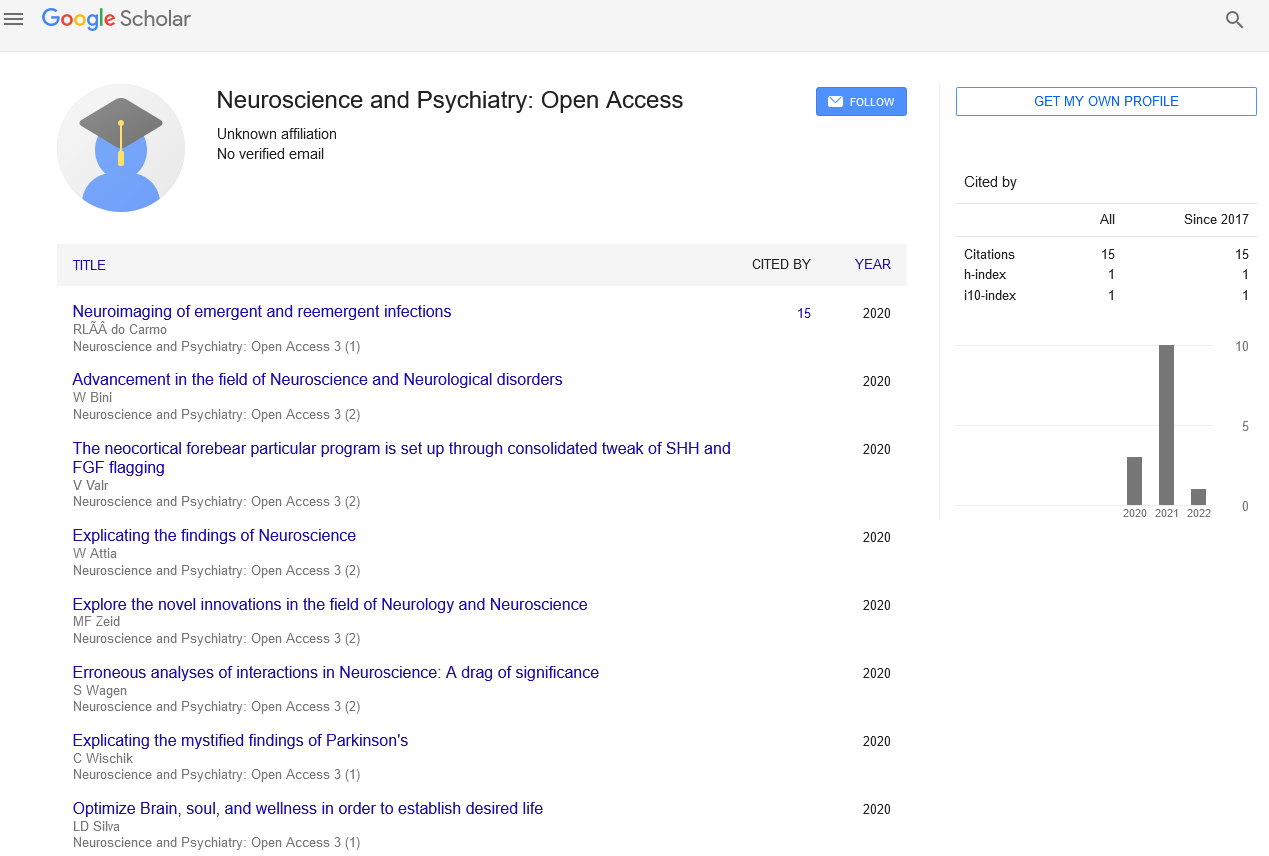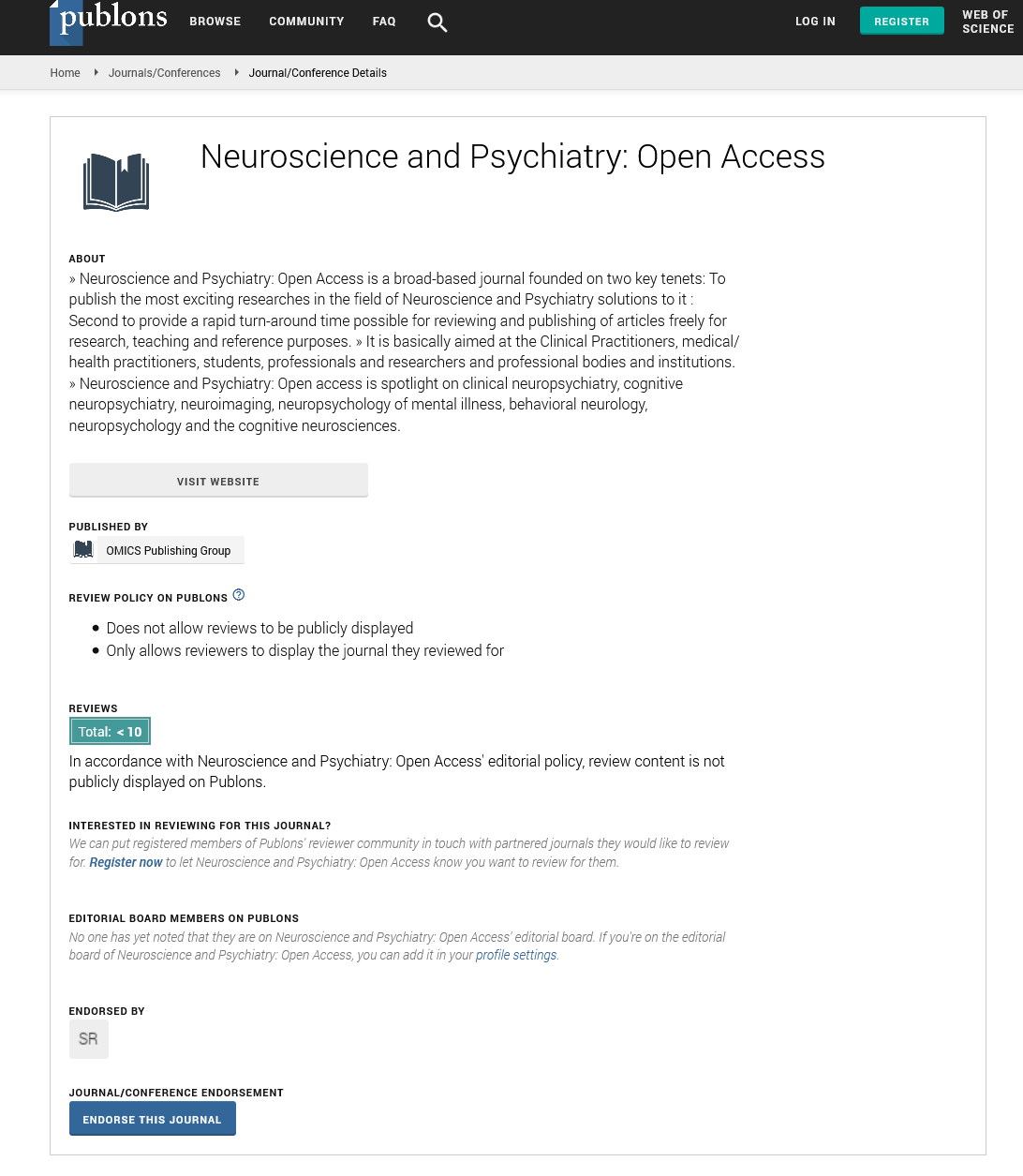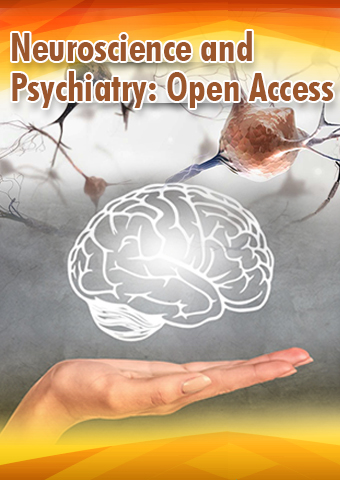Editorial - Neuroscience and Psychiatry: Open Access (2023) Volume 6, Issue 4
Neuroimaging: Unravelling the Brain's Mysteries
Nancy Jones*
Department of Clinical neuroscience, University of Afghanistan
Department of Clinical neuroscience, University of Afghanistan
E-mail: nancyj@gmail.com
Received: 01-08-2023, Manuscript No. npoa-23-110004; Editor assigned: 04-08-2023, Pre QC No. npoa-23- 110004; Reviewed: 18-08-2023, QC No. npoa-23-110004; Revised: 25-08-2023, Manuscript No. npoa-23- 110004 (R); Published: 31-08-2023, DOI: 10.37532/npoa.2023.6(4).95-97
Abstract
Neuroimaging has evolved as a breakthrough field in neuroscience, offering a comprehensive collection of non-invasive methods for investigating the complexity of the human brain. This article digs into the subject of neuroimaging, including basic techniques as well as applications. Structural imaging technologies, such as MRI and CT scans, provide extensive information about the structure of the brain, allowing for the diagnosis of structural abnormalities and neurodegenerative illnesses. Functional imaging techniques, such as fMRI and PET scans, provide useful information on brain activity and have greatly aided our understanding of cognition and emotion. Diffusion imaging, or DTI, reveals the intricate white matter tracts of the brain, offering light on connection and neuronal integrity. Neuroimaging has numerous uses in brain mapping, clinical diagnosis, cognitive neuroscience, and neuroplasticity research. Despite its significant contributions, neuroimaging confronts difficulties in data interpretation, participant safety, and privacy. In the future, advances in technology and data processing will take neuroimaging even further, allowing us to delve even deeper into the brain's mysteries. This article emphasises the critical significance of neuroimaging in solving the brain's mystery, developing a greater knowledge of brain function, and facilitating advances in neurological and psychiatric research and treatment. Neuroimaging has evolved as a game-changing field in neuroscience, providing non-invasive techniques for investigating the complexities of the human brain. Structural imaging, which includes MRI and CT scans, provides detailed brain anatomy, which aids in the identification of neurological diseases.
Keywords
Neuroimaging • Brain • Neuroscience • Structural imaging • Functional imaging • Diffusion imaging • MRI • CT scan • fMRI • PET scan • DTI • Brain mapping • Clinical diagnosis •, Cognitive neuroscience • Neuroplasticity • Brain-computer interfaces • Technology • Data analysis • Brain function • Neurological disorders • Psychiatric disorders
Introduction
The human brain, with its complex neuronal networks and sophisticated design, is one of the body's most mysterious organs. Understanding how the brain works and its role in cognition, behaviour, and disease has long been a goal of neuroscience [1]. Neuroimaging, a cutting-edge interdisciplinary field, has transformed our ability to examine the inner workings of the brain and shed light on its hidden secrets [2]. This article will look at several neuroimaging techniques, their uses, and the significant contributions they have made to our understanding of the brain [3]. With its complicated network of billions of neurons, the human brain remains one of the most fascinating and intriguing organs in the human body [4]. Uncovering the secrets of the brain has been a fundamental goal of neuroscience for generations. Neuroimaging is a fascinating view into the inner workings of the brain made possible by astonishing advances in technology and imaging techniques [5]. Neuroimaging, a multidisciplinary field combining neuroscience, physics, and computer science, has transformed our understanding of the brain's intricacies [6]. Neuroimaging allows researchers and doctors to see and analyse the brain's structure, function, and connectivity in unprecedented detail using a variety of non-invasive imaging methods. In this essay, we will delve into the world of neuroimaging and its significant impact on our understanding of the brain [7]. We'll look at basic neuroimaging techniques like structural imaging, functional imaging, and diffusion imaging, each of which provides a distinct viewpoint on different parts of the brain's architecture and activity. Furthermore, we will investigate the various uses of neuroimaging in the disciplines of brain mapping, clinical diagnostics, cognitive neuroscience, and neuroplasticity research [8]. We may appreciate the essential contributions neuroimaging has made to both basic neuroscience research and clinical practise by analysing how it has transformed our understanding of the brain's participation in cognition, emotions, and behavior [9]. While neuroimaging has expanded our understanding of the brain, it is not without challenges. We'll talk about some of the limitations and potential biases in neuroimaging data interpretation, as well as the ethical concerns about participant safety and privacy [10]. Looking ahead, we will take a look at the future of neuroimaging, imagining the possibilities that will emerge as technology advances and data analysis techniques grow more complex. Integrating neuroimaging with emerging sciences such as artificial intelligence and machine learning has the potential to open up new avenues for studying brain function and improving the diagnosis and treatment of neurological and psychiatric illnesses.
What is neuroimaging?
Neuroimaging refers to the use of advanced imaging techniques to visualize and study the structure and function of the brain. It allows researchers and clinicians to non-invasively examine the brain's anatomy, physiology, and metabolic activity. Neuroimaging has become an indispensable tool in neuroscience, enabling the observation of brain function in healthy individuals and those with neurological and psychiatric disorders.
Types of neuroimaging techniques
Structural imaging: Structural imaging techniques provide detailed images of the brain's anatomy, capturing its size, shape, and abnormalities. The two most common structural imaging methods are:
Magnetic resonance imaging (MRI): MRI utilizes powerful magnets and radio waves to generate detailed images of the brain's soft tissues. It is widely used for diagnosing structural abnormalities, such as tumors, vascular malformations, and neurodegenerative diseases.
Computed tomography (CT): CT scans use X-rays to create cross-sectional images of the brain. While CT is less detailed than MRI, it is valuable for detecting acute conditions like hemorrhages and fractures.
Functional imaging: Functional imaging techniques aim to visualize brain activity by detecting changes in blood flow or metabolic processes associated with neural activity. The two primary functional imaging methods are:
Functional magnetic resonance imaging (FMRI): fMRI measures changes in blood oxygenation levels to infer brain activity. It is widely used to study various cognitive processes, emotions, and neural networks in both healthy and clinical populations.
Positron emission tomography (PET): PET scans involve injecting a radioactive tracer into the bloodstream to measure brain activity. It is especially valuable in studying neurotransmitter function and metabolic activity in conditions like Alzheimer's disease and epilepsy.
Diffusion imaging: Diffusion imaging techniques, such as Diffusion Tensor Imaging (DTI), provide insights into the brain's white matter tracts. DTI measures the movement of water molecules along axonal pathways, enabling researchers to study the brain's connectivity and integrity.
Conclusion
Neuroimaging has unquestionably proven to be a game-changer in the field of neuroscience, providing an unprecedented look into the complex topography of the human brain. We have obtained extraordinary insights into the structure, function, and connection of the brain using a varied array of imaging techniques, unravelling long-standing mysteries and expanding our understanding of cognition, behaviour, and neurological illnesses. MRI and CT scans, for example, have enabled us to visualise the structure of the brain with extraordinary clarity, assisting in the detection and diagnosis of many neurological diseases. The ability to monitor and track changes in brain structure over time has been extremely useful in researching neuroplasticity and the impact of ageing and disease on the brain. Neuroimaging, like any scientific endeavour, is fraught with difficulties. Maintaining the integrity and reliability of neuroimaging data, as well as addressing potential biases and ethical concerns, remains critical. However, with continued technological and data analytic breakthroughs, we may anticipate overcoming many of these obstacles and substantially improving our understanding of the brain. Looking ahead, the future of neuroimaging seems promising. We should expect increasingly better spatial and temporal resolutions as technology advances, allowing us to capture the brain's dynamic operations in unparalleled detail. The combination of neuroimaging with artificial intelligence and machine learning has the potential to transform data processing and interpretation, allowing researchers to make innovative discoveries and breakthroughs.
References
- Bick David, Bick Sarah L, Dimmock David P et al. An online compendium of treatable genetic disorders. American Journal of Medical Genetics. Part C, Seminars in Medical Genetics. 187, 48-54 (2021).
- Kobayashi H. Airway biofilms: implications for pathogenesis and therapy of respiratory tract infections. Respiratory medicine 4, 241-253 (2005).
- Lewis RJ, Dutertre S, Vetter I et al. Conus venom peptide pharmacology. Pharmacological Reviews. 64, 259-98 (2012).
- Chandalia M, Lutjohann D, von Bergmann K et al. Beneficial effects of high dietary fiber intake in patients with type 2 diabetes mellitus. N Engl J Med. 342, 1392-8 (2000).
- Meng Y, Bai H, Wang S et al. Efficacy of low carbohydrate diet for type 2 diabetes mellitus management: A systematic review and meta-analysis of randomized controlled trials. J Diabetes Res. 131, 124-131 (2017).
- Silveira CGD, Romani RF, Benvenutti R et al. Acute kidney injury in elderly population: a prospective observational study. Nephron. 138, 104-112 (2018).
- Cheng WP, Wang BW, Shyu KG et al. Regulation of GADD153 induced by mechanical stress in cardiomyocytes. Eur J Clin Invest. 39, 960-971 (2009).
- Sharma NK, Das SK, Mondal AK et al. Endoplasmic reticulum stress markers are associated with obesity in nondiabetic subjects. J Clin Endocr. 93, 4532-4541 (2008).
- Poesen R, Evenepoel P, Loor H et al. The influence of renal transplantation on retained microbial-human co-metabolites. Nephrol Dial Transplant. 3, 1721-1729 (2016).
- Pletinck A, Glorieux G, Schepers E et al. Protein-bound uremic toxins stimulate crosstalk between leukocytes and vessel wall. J Am Soc Nephrol. 24, 1981-1994 (2013).
Indexed at, Google Scholar, Crossref
Indexed at, Google Scholar, Crossref
Indexed at, Google Scholar, Cross ref
Indexed at, Google Scholar, Crossref
Indexed at, Google Scholar, Crossref
Indexed at, Google Scholar, Crossref
Indexed at, Google Scholar, Crossref
Indexed at, Google Scholar, Crossref
Indexed at, Google Scholar, Crossref


